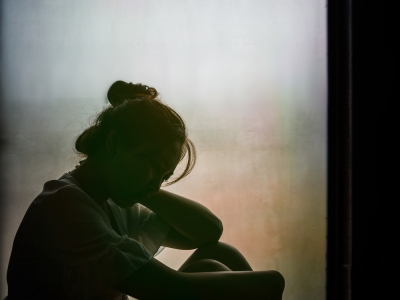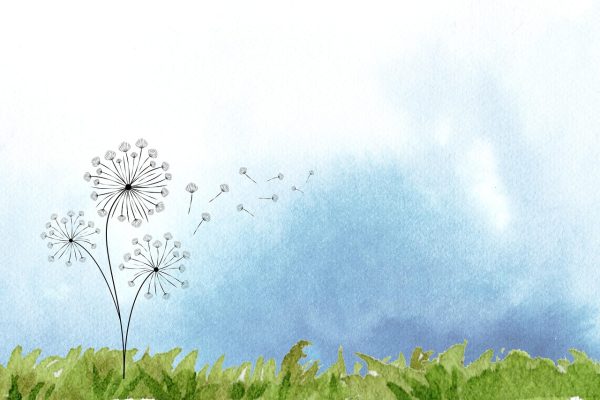Materials needed: paper, writing utensil, tape/band-aid
Introduction
It is undeniable that this period, and all that it entails, has evoked many intense emotions. Anxiety, worry, panic. Gratitude, connection, perspective. And — as we are coming to realize — grief. Of course, there is the traditional grief over lost loved ones. Whether they passed from the virus itself, or died of other causes but had to be mourned differently, death-related grief has presented new challenges, new difficulties, and new levels of pain.
Yet death-related grief is not the only type of grief present in our lives and communities.
Excerpt from “That Discomfort You’re Feeling is Grief,” David Kessler, as interviewed by Scott Berinato, Harvard Business Review:
“We’re feeling a number of different griefs. We feel the world has changed, and it has. We know this is temporary, but it doesn’t feel that way, and we realize things will be different. Just as going to the airport is forever different from how it was before 9/11, things will change and this is the point at which they changed. The loss of normalcy; the fear of economic toll; the loss of connection. This is hitting us and we’re grieving. Collectively. We are not used to this kind of collective grief in the air.
We’re also feeling anticipatory grief. Anticipatory grief is that feeling we get about what the future holds when we’re uncertain. Usually it centers on death. We feel it when someone gets a dire diagnosis or when we have the normal thought that we’ll lose a parent someday. Anticipatory grief is also more broadly imagined futures. There is a storm coming. There’s something bad out there. With a virus, this kind of grief is so confusing for people. Our primitive mind knows something bad is happening, but you can’t see it. This breaks our sense of safety. We’re feeling that loss of safety. I don’t think we’ve collectively lost our sense of general safety like this. Individually or as smaller groups, people have felt this. But all together, this is new. We are grieving on a micro and a macro level.”
Excerpt from “Trouble Focusing? Not Sleeping? You May Be Grieving,” R.O. Kwon, New York Times:
“I was grieving in early March, I’m still grieving now, and chances are, you are, too.Consider how much has already been lost, and how much more we’re likely to lose:
the lives already taken by the coronavirus, along with the lives currently in jeopardy, and exponentially more people falling ill every day. The lost livelihoods, the blasted plans. Entire families destitute today who were getting by three weeks ago. Upended routines. Postponed weddings and funerals. Depleted savings. Isolation. The quickly rising anti-Asian racism, stoked by a cowardly president trying to distract this country from his own negligence. Politicians arguing that our elders should die for the sake of the economy. The exhausted grief of those who already knew full well how hard it can be to be American and marginalized. Jobs vanishing, the jeopardized local businesses — restaurants, bookstores — that make a place home. Whole cities are changing, fast. Well, the whole world is, it seems, and there’s that to grieve, too. …
Coronavirus grief is already a vast, monstrous grief, its reach and breadth expanding daily. It’s also a collective grief, a worldwide loss that — physically isolated though many of us have to be — a lot of other people are, in one way or another, also mourning. I hope, in this extraordinarily difficult time, to be better than I’ve been at letting myself mourn. I’ll start at the beginning: This is hard. I hurt. If you’re hurting, too, you’re not alone.”
The Ritual of Kriyah
One of the tremendous gifts of the Jewish canon is a trove of wisdom surrounding grief and mourning. This exercise will focus on one of the foundational grief rituals: the practice of kriyah, or tearing a garment.
While the sources on kriyah often point back to biblical underpinnings, kriyah largely developed as a formalized mourning practice in the rabbinic period. Traditionally, kriyah is done by three categories of people: (1) those who are official “mourners” (the parent/spouse/sibling/child of someone who passed), (2) those who were physically present at the moment of someone’s death, and (3) those who receive bad news.
Texts
Shulchan Aruch, Yoreh De’ah 340:1
“Someone who is an obligated mourner* is obligated to tear.”
מִי שֶׁמֵּת לוֹ מֵת, וְהוּא מֵהַמֵּתִים שֶׁרָאוּי לְהִתְאַבֵּל עֲלֵיהֶם, חַיָּב לִקְרֹעַ עָלָיו
*Parent, sibling, child, spouse
Shulchan Aruch, Yoreh De’ah 340:5
“Anyone present at the moment when someone’s soul departs is obligated to tear.”
העומד בשעת יציאת נשמה של איש או אשה מישראל חייב לקרוע
Shulchan Aruch, Yoreh De’ah 340:36
“One must tear upon hearing bad news, such as when the community has gathered for war and it becomes known that they were killed by their enemies”
קורעין על שמועות רעות כגון שנקבצו רוב הצבור למלחמה ושמעו שנגפו לפני אויביהם
While these halakhic texts do not make explicit the purpose of kriyah, a few different rationales can be deduced:
• Tearing as an external symbol of the internal pain (wearing your heart on your sleeve)
• Tearing as a way to identify those who are in mourning for the rest of the community
• Tearing as a way to make the irrevocable and abstract nature of loss tangible and concrete
• Tearing as a cathartic action, serving as an outlet for intense emotional pain
• Tearing as a way to mark the transition from immediate and acute shock and pain of loss to the more prolonged process of mourning
• Tearing as an opportunity to move forward, through, or toward acceptance
Shulchan Aruch, Yoreh De’ah 396:1
“If one did not tear during sha’at himum [literally “hot moment” — moment of most intense grief], one does not tear unless it is within shiva, except for parents, for whom one tears even after shiva.”
שאם לא קרע בשעת חימום אינו קורע אלא תוך שבעה חוץ מאביו ואמו שקורע אפילו לאחר שבעה
Shulchan Aruch, Yoreh De’ah 339:3
“The mourner tears while reciting the words dayan ha’emet*”
כשמגיע לדיין אמת קורע האבל
*Blessing: Blessed are you, Adonai our God, Sovereign of the Universe, the true Judge.
Shulchan Aruch, Yoreh De’ah 340:9
“For all other categories of obligated mourners, one tears a tefakh [a handsbreath] on the outer layer and that is sufficient. For one’s parent, one tears all layers (even if one is wearing 10 layers!) until one’s heart is exposed.”
על כל המתים קורע עליו טפח בבגד העליון ודיו ועל אביו ואמו קורע כל בגדיו אפילו הוא לבוש י’ עד שמגלה לבו
These explanations — individually and in combination — have resonance and application for all types of loss. Kriyah allows us to identify, name and share the losses we are experiencing, both to ourselves and to those around us, and provides a visceral outlet for some of our more intense and difficult emotions.
Exercise: Take a piece of paper and a writing utensil. Along the edges of the piece of paper, write or draw representations of the myriad of things you are grieving in this moment. This grief can be death-related, but it does not have to be. You may be grieving loss of income or loss of routine. You may be grieving a wedding postponed or a vacation canceled. You may be grieving an opportunity for the future that has evaporated, or an experience that has been missed. You may be grieving people, places, experiences, or moments. What you’re grieving can be small or large – whatever feels real to you; your loss is not being compared to that of another. Fill the outsides of your paper with as few or many losses as you’d like.
Once you are done, set aside your writing utensil and tear your paper. One by one, tear through each individual text or drawing, taking a moment to mourn each loss.
Shulchan Aruch, Yoreh De’ah 340:15
“For all other dead, one crookedly mends the tear after seven days, and resews the edges after thirty days. For one’s parent, one crookedly mends the tear after seven days, and never resews the edge.”
על כל המתים שולל לאחר ז’ ומאחה לאחר שלשים יום. על אביו ואמו שולל לאחר ל’ יום ואינו מאחה לעולם
The laws of kriyah acknowledge that losses heal in different ways and on different timelines, and that there are some losses that can never be fully repaired.
Return to your paper, and see which of the losses you tore may be able to be mended. Put a piece of tape or a band-aid over those tears, and consider writing the method of repair on the tape/band-aide. For example, on top of a tear for “wedding postponed,” you might write “wedding rescheduled.” Some of the losses you are experiencing may not have opportunities for repair — maybe ever, or maybe simply not in a way that is apparent right now. This process acknowledges that even those losses that may be overcome in the future will never be fully the same; the tears did undoubtedly occur. And we may still be able to move forward.
Our tears do not mean we are broken. Our tears shape the new contours of our ever-changing, ever-evolving, hearts. They become who we are. By acknowledging them, and making space for their pain, we grow into the fullest and most reflective versions of ourselves. We allow ourselves the gift of wearing our hearts on our sleeves — tears, band-aids, and all.












